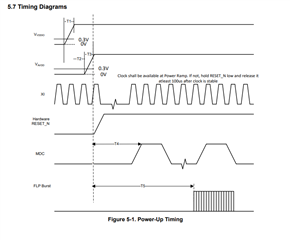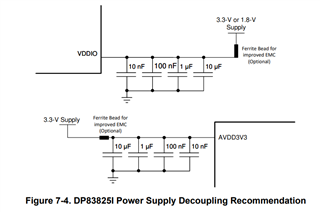Tool/software:
Hi team,
Customer can't see waveform for compliance test by below procedure and setting.
Compliance Target: 10BASE-T
Procedure
1. Disable auto-negotiation: BMCR_Register bit12 0x0
2. select 10Mbps: BMCR_Register bit13 0x0
3. Mode is selected by COMPT_Register: 1001 or 0100 or 0011
BTW, customer noticed voltage ramp might be a problem. If T1 or T3 ramp up before 0.5ms passed, what will be happen?
Best regards,
Hayashi





